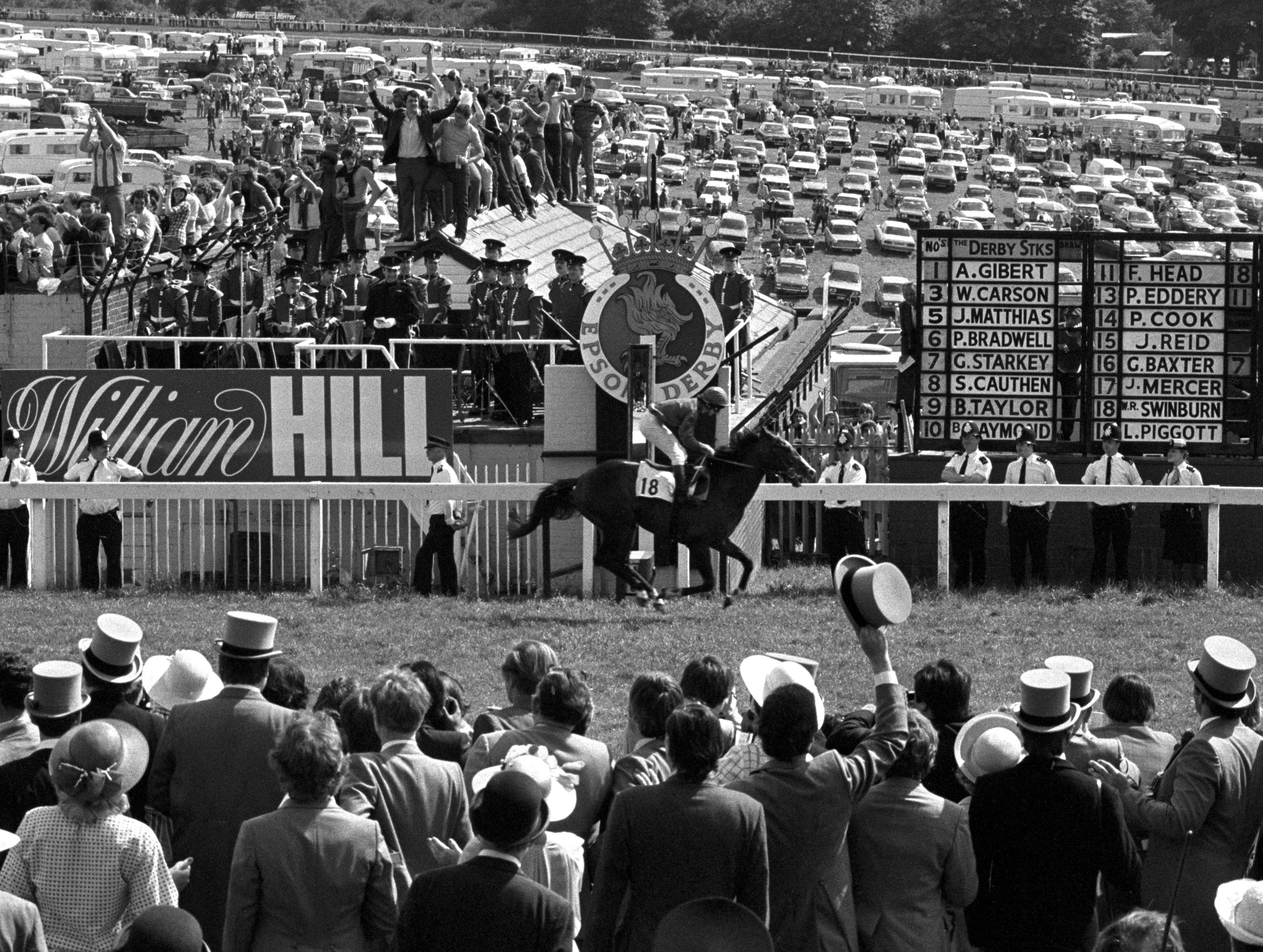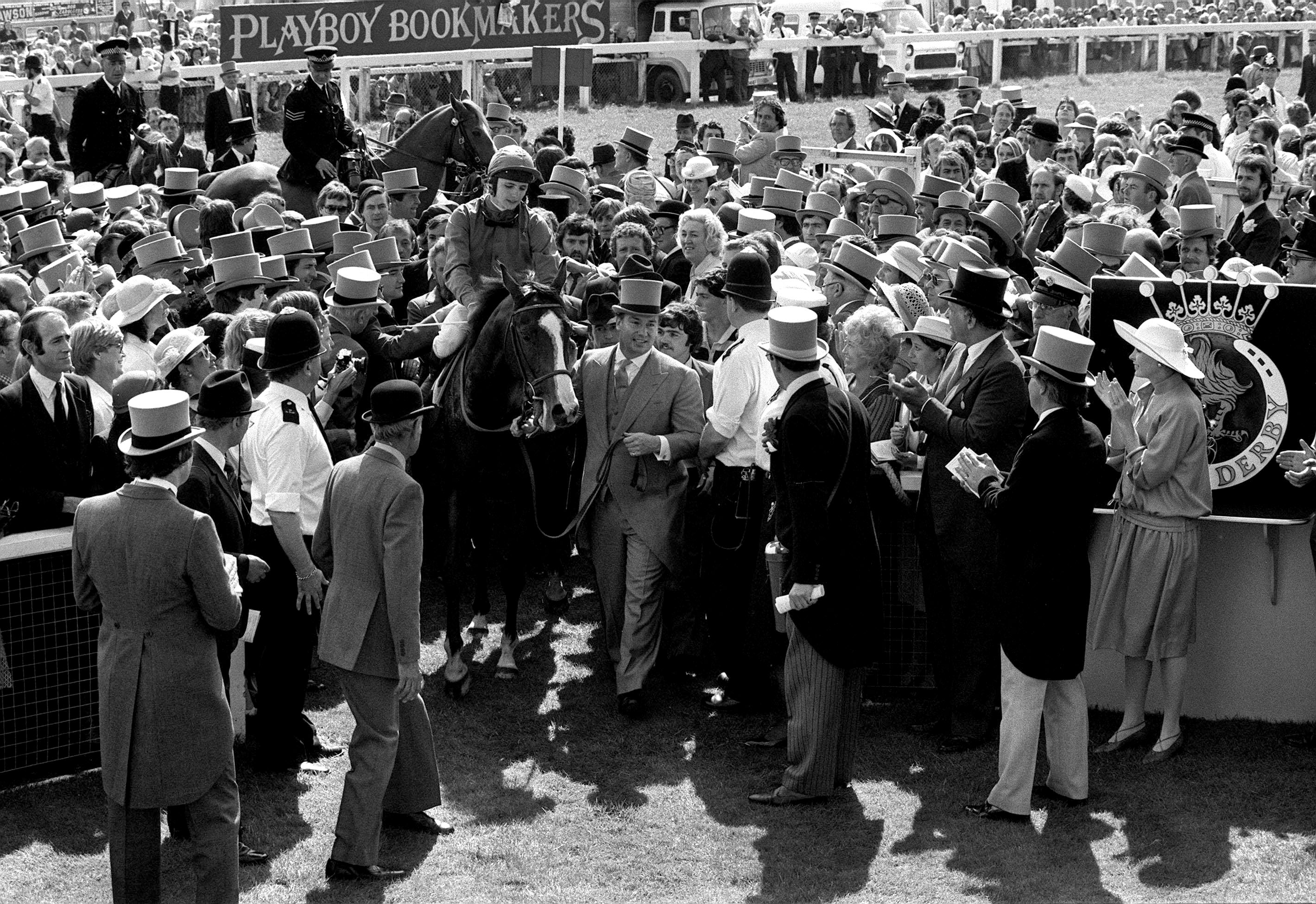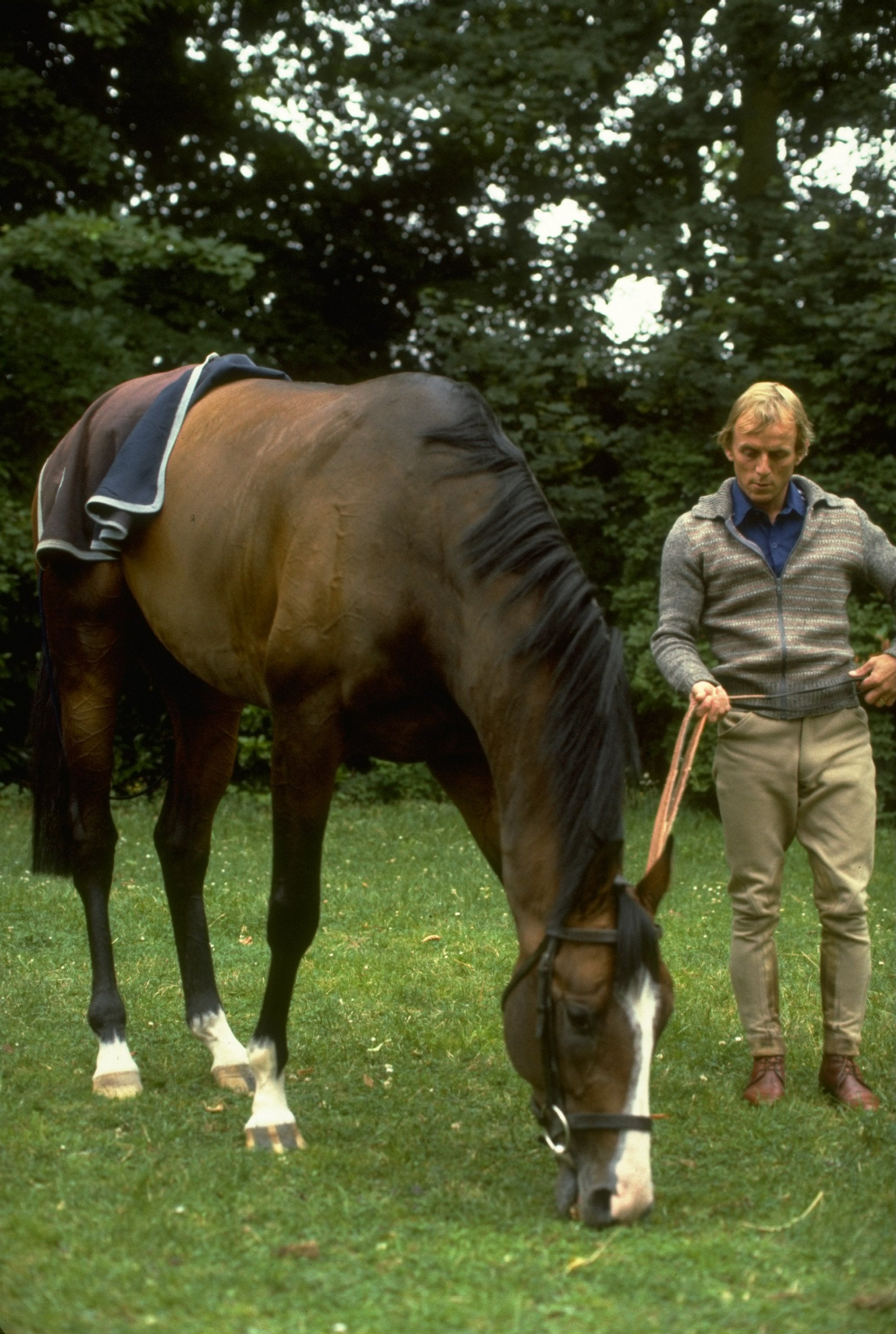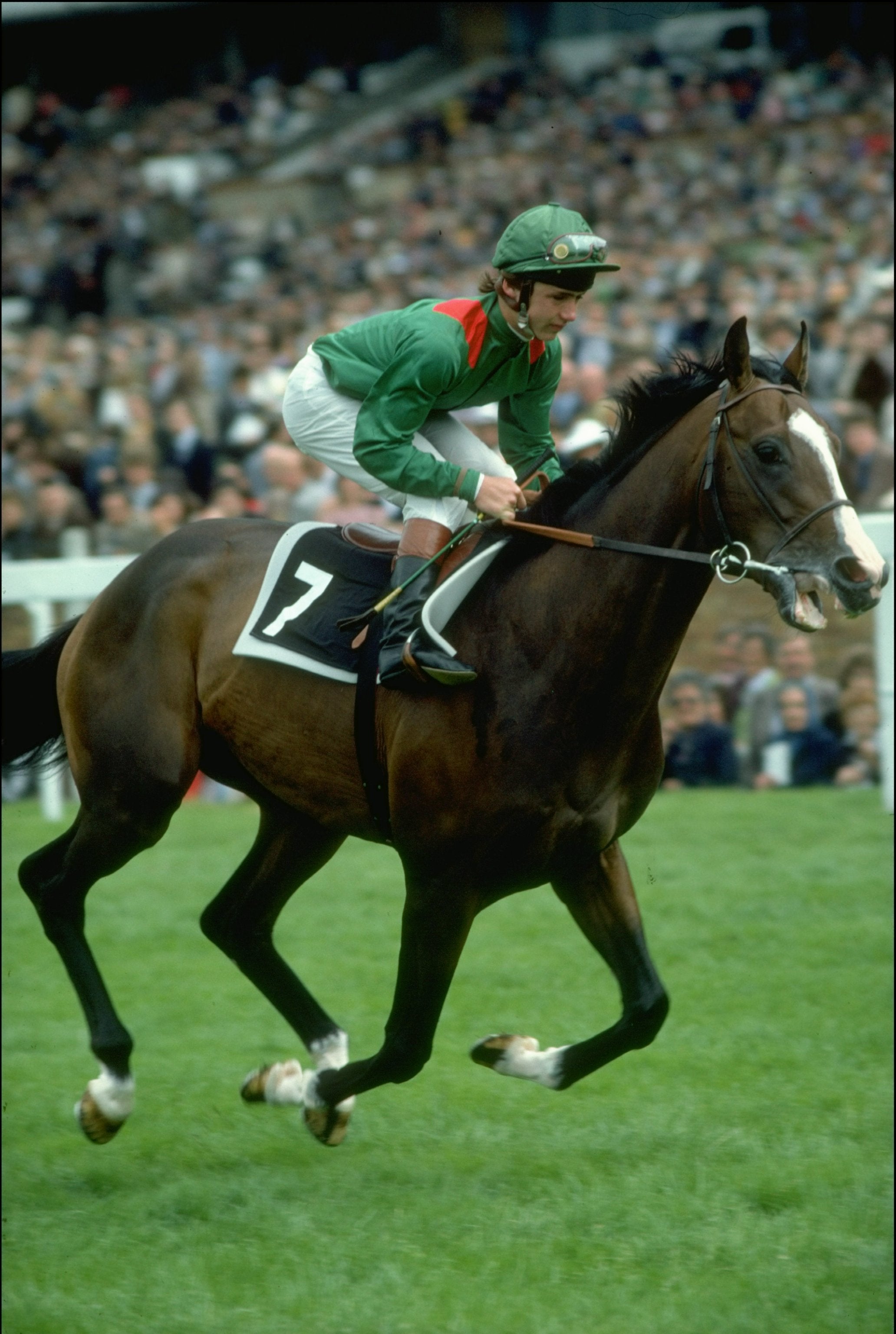Will we ever know what really happened to Shergar?
The most famous racehorse of all time was owned by the Aga Khan, who died last week. But while the stallion was kidnapped over 40 years ago, the mystery of what really happened to him still remains. Racing correspondent Sam Turner reports


As tributes were paid following the death of the Aga Khan IV at 88 earlier this week, stories were told of his vast £10.5bn wealth, his two marriages, which ended up costing him millions in divorce settlements, and widespread philanthropy that spanned the globe. But for most people, his name will be forever linked with Shergar, the spectacular winner of the 1981 Epsom Derby and the subject of one of the greatest unsolved crimes of the 20th century.
Although the big bay was just one of five Derby winners to carry the famous green and red silks of his owner, Shergar’s heroics on the track in the hands of gifted teenage rider Walter Swinburn that first Wednesday in June, swiftly established him as one of the race’s most iconic winners.
Shergar won by 10 lengths – the biggest victory margin in the race’s 226-year history. Rarely do displays of such raw brilliance and class transpire on the greatest stage, and the magnitude of Shergar’s victory was not lost on his owner. Of that 1981 Derby triumph, the Aga Khan said: “It’s a memory that can never, never go away. If you’re in racing, the Epsom Derby is one of the greats. It always has been, so to win a race of that quality in itself is an extraordinary privilege. To win it the way he won it was more than that.”
Shergar followed up his Epsom victory with success in the Irish equivalent at the Curragh, where Lester Piggott was united with the colt for the first time in his two-year-old career. Regular rider Swinburn returned to the plate for the King George VI and Queen Elizabeth Stakes at Ascot in July, where Shergar managed to follow in the hoofprints of Nijinsky and Mill Reef by winning the mid-summer Group 1 prize. Sadly, his racing career ended in defeat at Doncaster in the St Leger, where a combination of soft ground and a step up in trip served to blunt his speed.
There was relief when it was announced that Shergar would be put to stud in Ireland and not, as many in the horse-racing world had feared, in America. As a result of his on-track glories, a syndicate headed by the Aga Khan was able to charge up to £80,000 a time for Shergar’s services. He covered around 40 mares in his first season, with a further 55 planned for the following year.
But then, one misty night in February 1983, at the Aga Khan’s Ballymany Stud on the outskirts of Newbridge, Co Kildare, events would unfold which would propel Shergar’s name into the headlines again. The stables groom Jim Fitzgerald was held at gunpoint by a masked gang and ordered to lead the world’s most famous racehorse into a waiting horsebox. A ransom demand of £2m would then be issued for the colt’s return.
Sadly, the kidnappers were unaware that the Aga Khan had syndicated Shergar’s breeding rights – the Epsom hero was now in the midst of his second year in a career at stud valued at £10m – and was no longer his sole owner, with up to 34 other shareholders now invested in his new role.
The ensuing days descended into farce, with a subsequent police investigation failing to identify the whereabouts of Shergar or who had kidnapped him. The first problem for the police was the timing of the kidnapping. Shergar had been taken the day before Ireland’s biggest racehorse sale, and horseboxes were being driven across the country, making the task of finding the box containing Shergar impossible.

The investigation was then made even more difficult because officers from Dublin and Kildare were put on the case but reportedly refused to share information, believing they were in direct competition.
Everyone wanted to know who had taken Shergar, why they had done so, and what became of him. From racing enthusiasts to ordinary members of the public, the country was gripped. Then, as now, the colourful theories were numerous, with the IRA, Colonel Gaddafi, and even the mafia all being in the frame. One story suggests that the IRA kidnapped the horse for Gaddafi in return for weapons. Gaddafi’s motive for wanting the horse was said to stem from his belief that he should lead the Islamic people rather than the direct descendants of the prophet Mohammed, such as the Aga Khan.
Bizarrely, a clairvoyant was even used to try to ascertain Shergar’s whereabouts, while television personality Derek Thompson was also employed – along with colleague John Oaksey and The Sun journalist Peter Campling – to try to negotiate with the kidnappers for the horse’s release.

Thompson recounted the experience in his autobiography, saying: “Each time the caller would give me a different horse as a codename so I knew it was him, and it was a very cold voice, I can tell you.
“There were a number of things we wanted to see, like the horse next to the day’s paper, so we knew the horse was alive.
“The true story is that at about 1.30am, I kept him talking for more than a minute and a half, and in those days that would be enough to trace the call. When I said to the policeman next to me, ‘Did you trace the call?’ he said, ‘Mr Thompson, I’m sorry to say the officer who traces calls went off shift at midnight.’”
It was a crucial window of opportunity that was sadly spurned, as a call was made the following day to inform the negotiators that Shergar had met with an accident and was dead. Thompson added: “I’m in no doubt that the people I was talking to were the kidnappers of Shergar. I would love to know where the horse is buried so we can put the case to rest.”
On returning to England, Thompson documented everything he remembered from his time working on the case and later revealed a password he had concealed. This was included in a book written by an IRA supergrass, Sean O’Callaghan, who claimed the organisation had planned and committed the kidnapping.

“I can never forget the voice and can never forget the codenames,” said Thompson. “There was one I kept back called ‘King Neptune’. Everything else was made public, and when I read the book by the IRA man who said he had stolen Shergar, he used that very codename.”
With the police operation in full swing and the Garda searching for Shergar throughout Ireland, the theory is that the kidnappers decided they had no option but to kill the horse and bury his remains. One school of thought was that the gang members who had stolen the horse had little knowledge of how to handle a nervous, full-grown thoroughbred and had shot the panicked stallion just a few hours after his abduction.
However, those close to the horse, including his former jockey Swinburn, have always insisted that this theory did not ring true because Shergar was a very calm horse and would not have been aggressive. The other story is that the gang, having realised that their ransom demand was a non-starter, abandoned the plot and buried Shergar in the remote mountains near the border with Northern Ireland.
Shergar’s body was never found, and the horse’s owners did not receive a penny from Shergar’s life insurance policy because of that. Years later, Swinburn admitted he was resigned to the fact that he would never truly know what happened to the horse he described as the greatest he had ever ridden, saying: “I must have heard a million and one theories about what happened to him. But I don’t think anyone will ever find out what really happened to Shergar. I just pray he didn’t suffer too much. But you can’t even be sure of that.”
Join our commenting forum
Join thought-provoking conversations, follow other Independent readers and see their replies
Comments
Bookmark popover
Removed from bookmarks